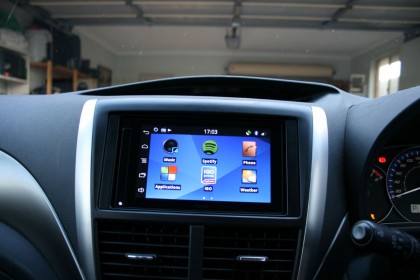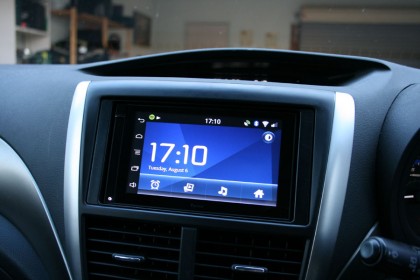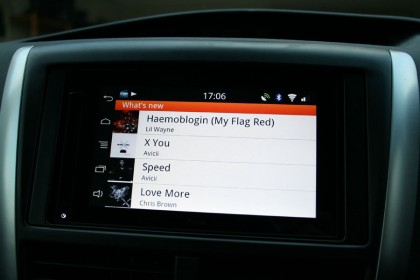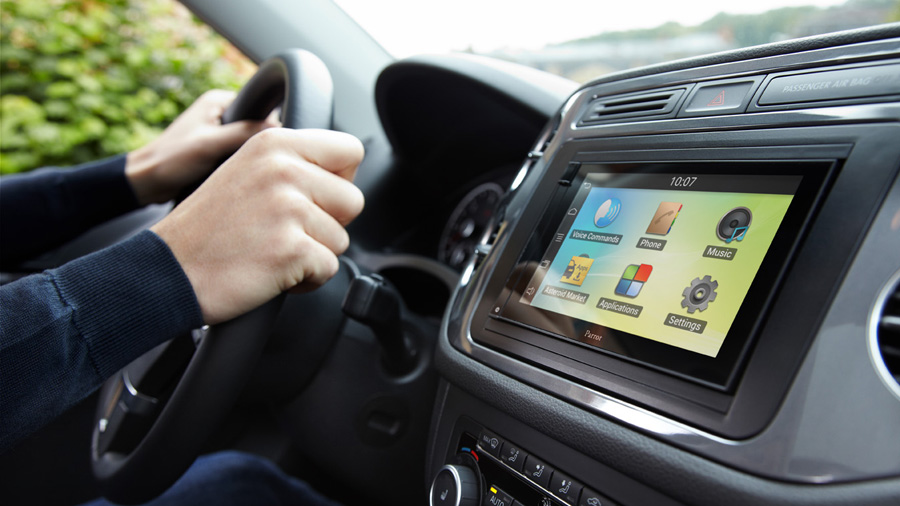Why you can trust TechRadar
Connectivity
One of the key benefits of this unit is its ability to connect to the wonders of the internet.
A whole bunch of cables run from the back of the unit to the glove box, which lets you plug in USB modems as well as iPods, although the default is the old 30-pin iPod connector rather than the new Lightning port.
If you don't want to spring for another SIM card and modem, the Asteroid can also connect to your smartphone's data connection, either through Wi-Fi via a personal hotspot, or via Bluetooth.

That Bluetooth connectivity is pretty useful, too. While any head unit worth its salt these days connects to your phone for Bluetooth audio, the Parrot also lets you stream Bluetooth audio from your devices.
That's right: devices. It can connect to two phones at the same time, letting you remain connected whether you're the passenger or the driver.
Coupled with the ability to share your phone's data connection via Bluetooth, and it suddenly offers plenty of versatility.
While it all sounds good on paper though, things do get a little frustrating when you're actually pairing. The Asteroid unit doesn't appear to store your address book on the device, instead synchronising contacts when you turn on the car and it pairs to your phone.

That's all well and good if your address book is nice and light. But if you have hundreds of contacts stored in your phone, the synchronisation process can take a while.
And the problem with this is that the voice control functions won't let you call someone from your address book until your contacts have synced up. So if you're running down the shops and need to call home to check if you need milk, it may be easier to wait until you get there.
Given Android's native address book and calling functions, this seems like a fairly simple oversight.
Controls
Despite the fact the Asteroid Smart runs Android as its core operating system, Parrot has done a lot of work with the user interface to make it easier to control when behind the wheel.
Two rows of three icons adorn the home screen with multiple home screens on offer. Some apps, like TuneIn Radio, offer widgets as well, although they do require the internet connection to update, which isn't always practical.
Down the left hand side of the screen runs five dedicated soft buttons: Back, Home, Menu, Running apps and Volume. The icons are lifted straight from Android, and are instantly familiar, which is helpful for navigation.

Icons on the home screen can be organised by the user, and though there's no option for folders on the screen, you can pop your most used apps on the home screen to have them easily accessible for when you start the car.
As mentioned earlier, the Smart system also includes the option for steering wheel controls, although actual installation of the system was interesting.
According to the installer, most steering wheel units use simple tones to dictate the controls of different buttons on the steering wheel. The Parrot Unika system uses its own method of communication, which is different for every vehicle the Smart system is installed in.

After three trips to the installer, they finally managed to get the system to work. And work it did, right up until the point a software update was released for both the Smart and the Unika steering wheel controls.
Since then, the system has a tendency to reset the steering wheel controls to "Off" every time the car is switched off. It's easy to switch them back on through the settings menu, but it's a three step process that is often more trouble than it's worth for short trips.
Hopefully bugs like this will be worked out for the next software update, but it is frustrating.
